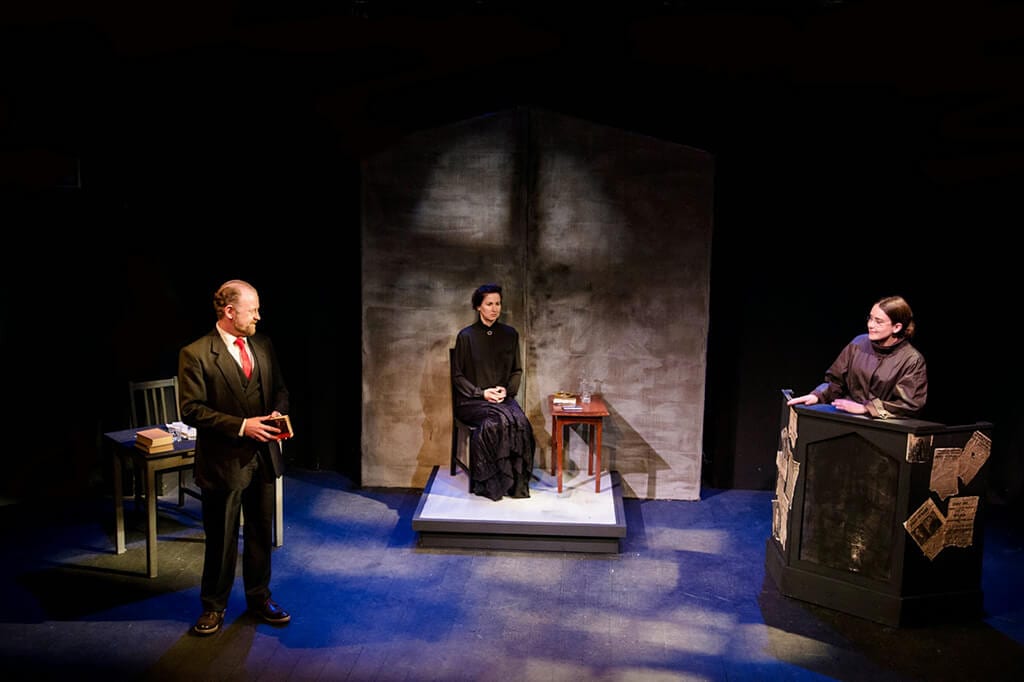With the up coming centenary of the 1916 Easter Rising, this play is strikingly relevant. It follows the trail of one of the most prominent leaders of the rising, Countess Markievicz, who, after rejecting her Anglo-Irish upbringing, became a key player in the rise of Nationalist political organizations such as Sinn Féin and Inghinidhe na hÉireann. She was put on trial for her supposed shooting of an unarmed police officer, Constable Michael Lahiff during the rising in Dublin, 1916. Ann Matthews’ play follows the ins and outs of that trial.
Matthews has written an array of impressive publications, including her most recent article on ‘The Women’s Section of the Irish Rebel Army Easter 1916: Class background and Role’. Her historical knowledge seeps into this production with in an impressive way. Although Matthews has written successful drama before, including her acclaimed play LOCKOUT, Madame de Markievicz On Trial fails to capture the dramatic spark that a piece of theatre should invariably possess.
Barbara Dempsey’s performance as the title character is bold yet nuanced. Her posture is strong yet fragile as she tips towards the audience, confiding in us throughout the short 70 minute running time. Niell Flemming gives an assured performance as the British Prosecutor. His crisp English accent and confident physicality hold the show together neatly. Síofra O’Meara delivers a dramatic monologue towards the end of the production with skill. She manages to evoke a healthy dose of empathy as we are forced to picture the unarmed officer bleeding on the ground, his lungs collapsing slowly and painfully.
The strength of this play lies in its exploration into the women behind the myth. A combination of Dempsey’s performance, Fox’s direction and Matthews’ script creates a fully formed, three-dimensional female character – one that contrasts considerably from the heroic icon she is often remembered as. Was she ‘Ireland’s pied piper’ or merely an eccentric, hypocritical aristocrat who replaced her jewels with weapons? The audience is forced to decide for themselves, seeing as we are addressed the ‘jury’ throughout.
This is an informative and lively historical piece, but it seems to lack the theatrical qualities necessary to make it a more engaging play. While Cathy O’Carroll’s lighting design helps to improve this, the large sections of verbatim (text taken directly from historical speeches) seem to stilt the play’s climactic structure and potential for tension. The play is no doubt a fitting choice for the centenary celebrations of the Easter Rising, but it falls slightly short of taking your breath away.

